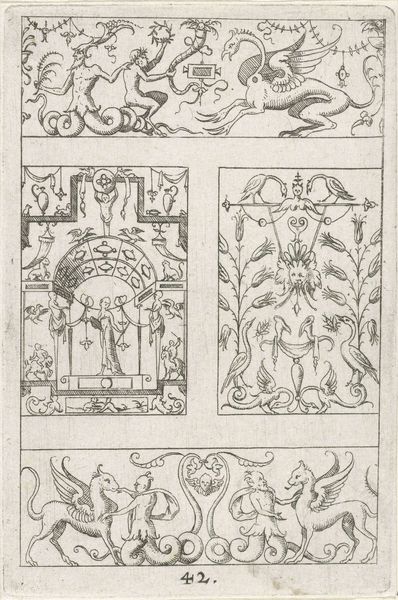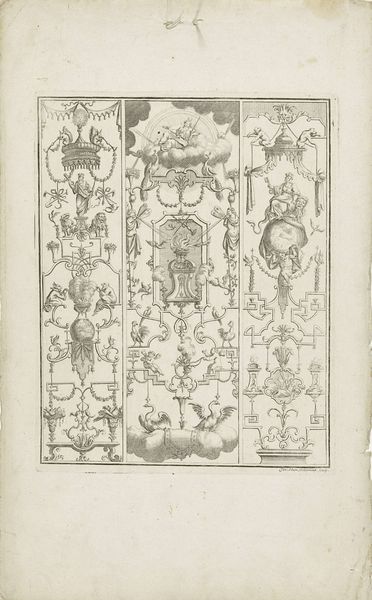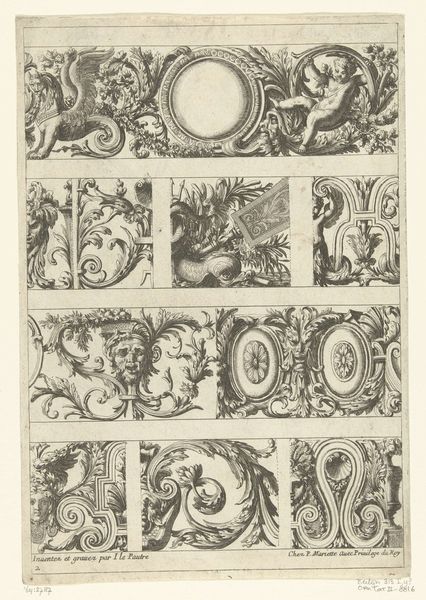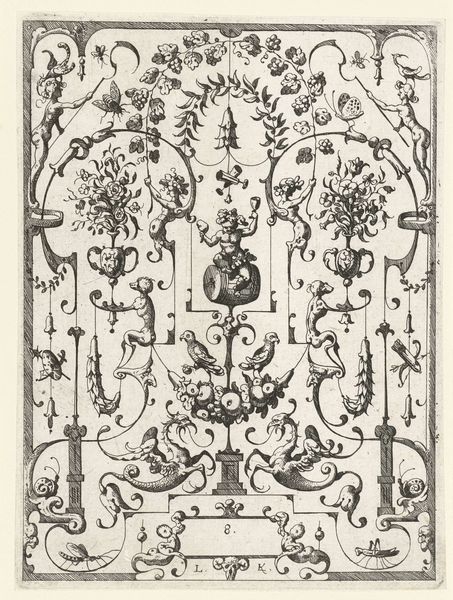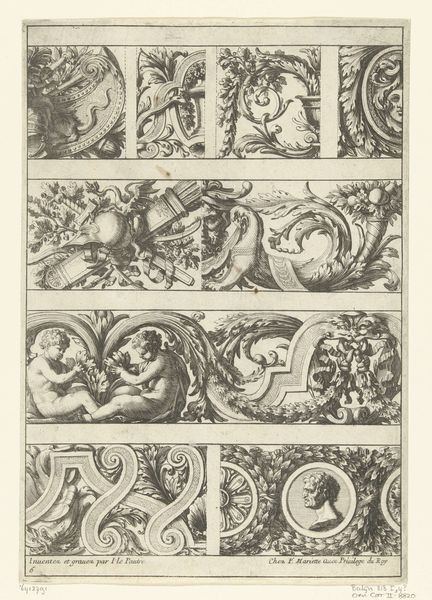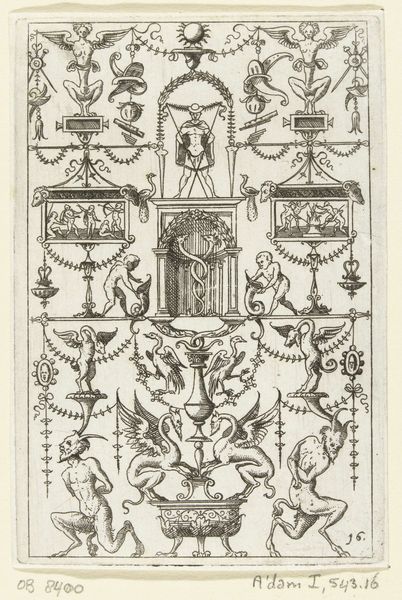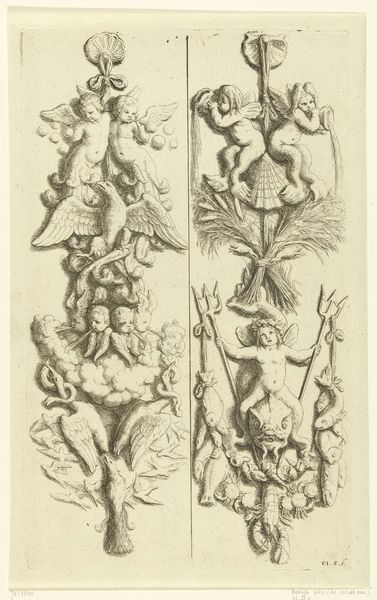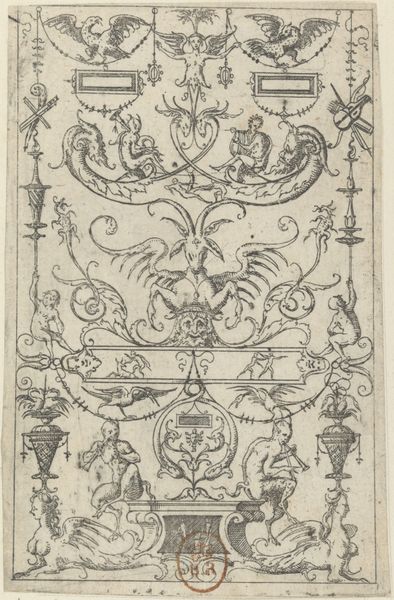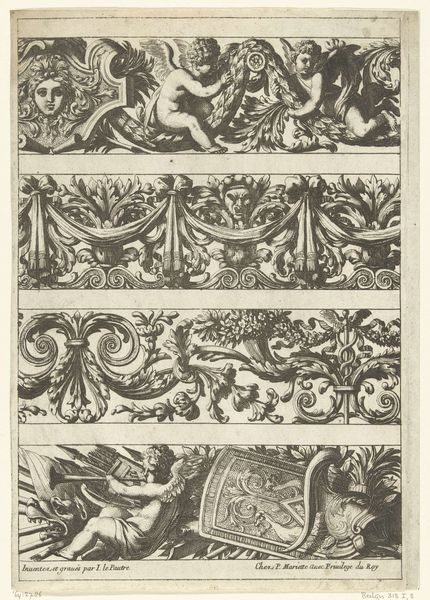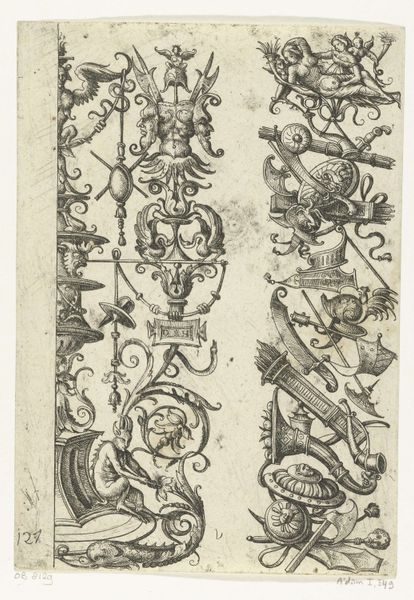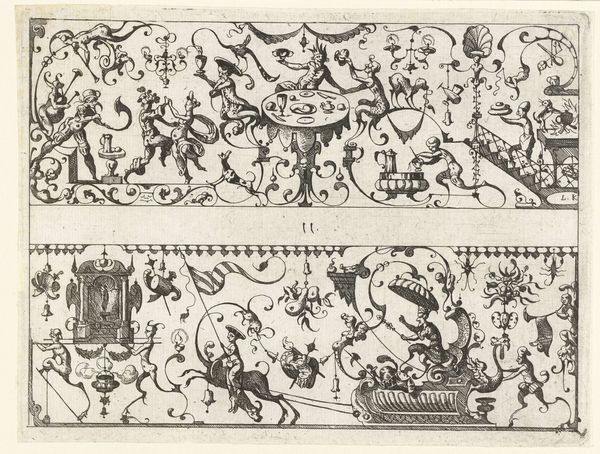
drawing, print, ink, pen, engraving
#
drawing
#
pen drawing
# print
#
pen illustration
#
figuration
#
11_renaissance
#
ink
#
geometric
#
line
#
pen work
#
pen
#
decorative-art
#
engraving
Dimensions: height 104 mm, width 70 mm
Copyright: Rijks Museum: Open Domain
Hans Sibmacher created this engraving of two candelabra designs sometime before his death in 1611. It exemplifies the Netherlandish Mannerist style that was in vogue at the time. Note the abundance of classical motifs, such as mythical creatures, garlands, and urns. These designs reflect the influence of the Italian Renaissance, which had spread throughout Europe by the late 16th century. Engravings like this one were not intended as art objects in themselves, but served an important pedagogical function. They were pattern books intended for use by goldsmiths and other artisans. By studying and copying these designs, craftsmen could learn new techniques and stay abreast of current trends. The availability of such pattern books was an important factor in the development of a sophisticated material culture. To learn more, look into the network of artists, workshops, and publishing houses that made the mass production of images possible. Also, explore how the rise of a consumer society created a demand for new and innovative designs.
Comments
No comments
Be the first to comment and join the conversation on the ultimate creative platform.
